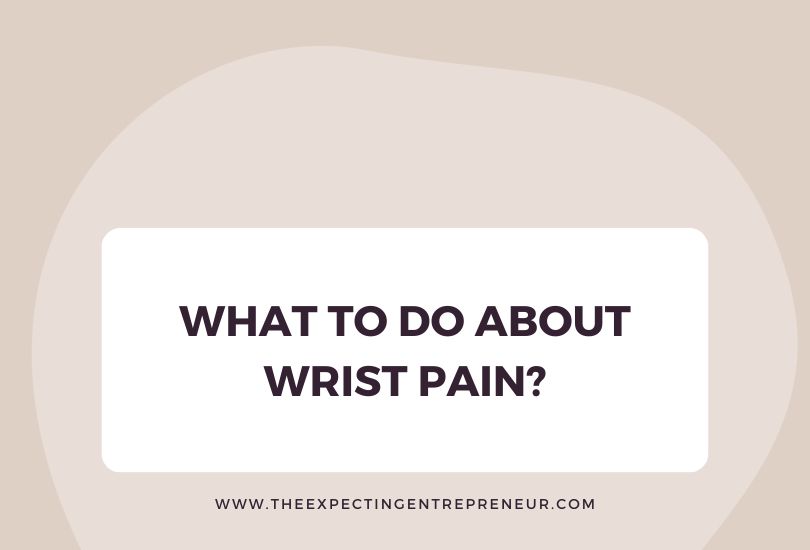I liken a new mama to a court reporter in terms of being at risk for extreme, carpal tunnel-esque wrist pain.
Seriously, I don’t know which person has it harder!
That tingling down the arms?
Recurring numbness?
Feeling like your wrist could give out at any second?
And the pain.
The kind that doesn’t seem to ever go away.
Add in running a business from your computer…
Let’s just saw I’m no stranger to that grit-your-teeth kind of pain.
Sometimes my wrist has been so out of whack that picking up a spoon causes me to flinch.
It’s awful!
So if you have to do certain movements like feeding, rocking, picking up, and putting down over and over again, I want to make sure pain like this is handled!
I do a TON of work with new mamas addressing wrist pain related to muscular tension, but recently was asked about what to do when wrist pain feels more nerve related.
This post is to help you figure out what kind of wrist pain you are experiencing, and provide some guidance as to what kind of treatment would best solve it.
My goal is to direct you to the help you need.
Take the time to consult a professional.
So you can stop thinking about your wrist pain 24/7, and get back to your family, your child, and other responsibilities.
In general, the two types of issues that could be causing your discomfort are either entrapment or impingement.
Nerve Entrapment is when a nerve is caught in soft tissue such as your muscles, fascia, tendons or ligaments.
Normally, the nerve would smoothly glide in between the soft tissue but when it’s literally trapped, it can’t, and scar tissue or adhesions can develop.
The nerve may be trapped along the neck or torso, but the pain can radiate all the way down to the wrist.
It feels achy, like your wrist is going to give out.
Your whole arm feels tired and it’s hard to keep your hand working like it should without constant fatigue.
For entrapment, you can reduce pain with targeted manual manipulation of the muscles around the wrist and use full body movement to address muscular tension along the neck and spine contributing to wrist pain.
Who can help you with targeted manual manipulation?
A massage therapist or manual therapist.
Who can help with full body movement?
A physical therapist or a yoga therapist.
Nerve impingement is when the nerve is being pressed on by bone or cartilage.
Yes, ouch!!!
This is usually in the spine (discs) or at the joints (shoulder, elbow, wrists).
You might describe the feeling like a “pinched” nerve, characterized by sharp, radiating pain.
In this case, you need the attention of a skilled professional who can provide skeletal adjustments, such as a chiropractor.
However, because impingement may be brought on by posture, or repetitive movement, the same tips for entrapment apply as well: massage and full body movement to change postural habits.
So, who is the full cast of characters that can help with your wrist pain?
A massage therapist or manual therapist can help with targeted manual manipulation in the case of nerve entrapment.
A chiropractor can help with a spinal adjustment in the case of nerve impingement.
A physical therapist or yoga therapist can help you develop full body movement patterns that prevent future entrapment and/or impingement.
What to do now that you have more info and your wrists still hurt?
- Assess the characteristics and type of pain you are experiencing (No self diagnosing though, only a licensed professional can do that!)
- Think about what kind of provider would be best able to address the type of pain you are feeling.
- Give them a call, describe your pain, (you can say “I am feeling ________, and I think it might be entrapment/impingement) and schedule an appointment.
If you know this blog post was meant for YOU and are shaking out your wrist as you read this, consider this your gentle nudge to make that call and taking the first step to getting the care you deserve : )
Want more resources about postpartum support pros? Check out Chapter 8 of The Expecting Entrepreneur.



